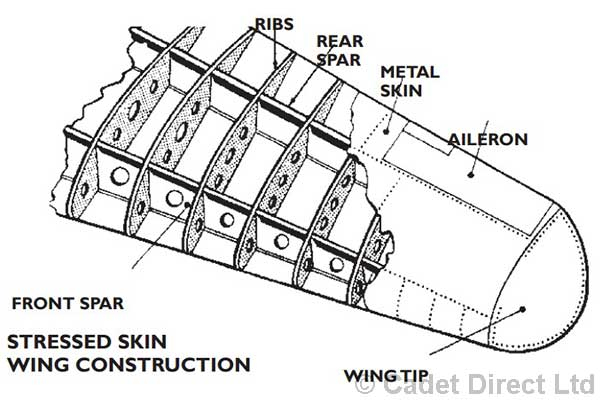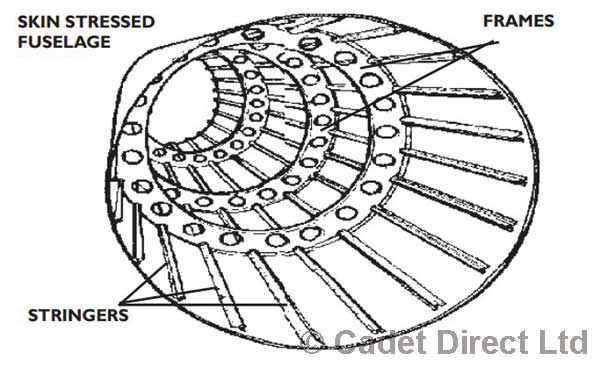Types of Aeroplane Construction
Stressed Skin Construction
Almost all aircraft are manufactured to a type of construction known as “stressed skin” which provides a structure with good strength-to-weight ratio. For ease of construction, transportation and repair the airframe is built in sections. The fuselage may consist of nose, front, centre and rear sections which are bolted or riveted together to form the whole. The main advantages of this type of construction are:-
- a. The skin takes the stress in flight.
- b. Relatively lightweight covering providing rigidity.
- c. Provides a good streamlined shape.
In this type of construction the FUSELAGE (see diagram below) consists of transverse frames or formers with lengthwise members called stringers. The whole is covered with light alloy sheeting.
The frames resist the compression loads and give the fuselage its shape. The stringers resist the bending loads and provide a means of riveting the skin onto the fuselage.
Main Planes
Theses have greater thickness at the root (fuselage) end and here the stresses are greater. The wing (see diagram below) is made up of spars which are the main strength members that extend from the root end to the wing tip and resist the torsional loads on the main plane. The ribs provide the wing with the correct aerofoil shape and resist compression loads. The skin covering is riveted to the ribs and stringers.
The Sandwich Method of Construction
This is used to cover the main surfaces and consists of inner and outer light alloy sheets attached to a core of corrugated sheet. It provides a rigid structure where heavy spars are not necessary. The number of rivets can be reduced and the surface finish is very smooth.

The Integral Method of Construction
This is achieved by machining or chemically etching a solid block of material to provide a skin with integral stringers. This provides a much stronger and more rigid structure without compromising the wing's overall weight.



